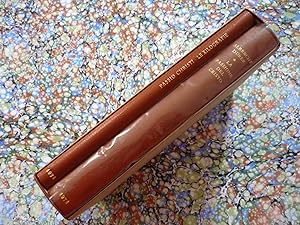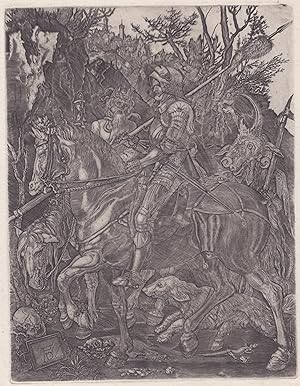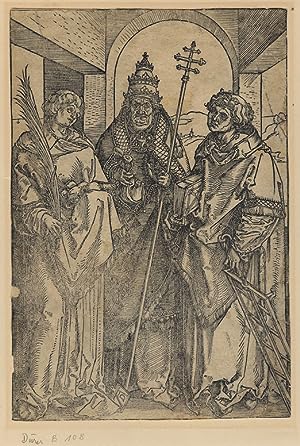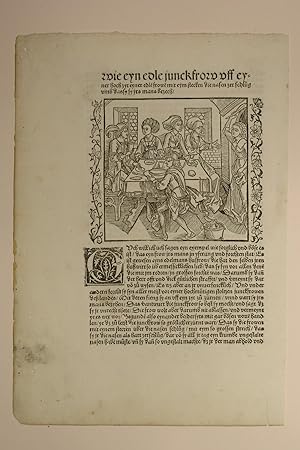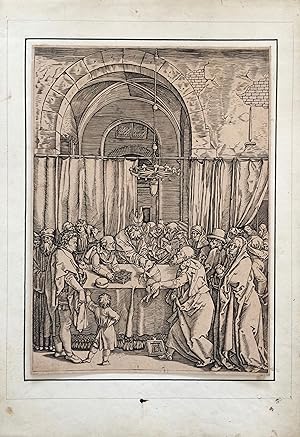Albrecht Durer (Over 1,800 results)
Product Type
- All Product Types
- Books (1,647)
- Magazines & Periodicals
- Comics
- Sheet Music
- Art, Prints & Posters (177)
- Photographs
- Maps (1)
-
Manuscripts &
Paper Collectibles (9)
Condition
Binding
Collectible Attributes
- First Edition (181)
- Signed (8)
- Dust Jacket (157)
- Seller-Supplied Images
- Not Printed On Demand (1,630)
Free Shipping
Seller Location
Seller Rating
-
Stultifera navis
Published by Johann Bergmann de Olpe, Basel, 1498
Seller: Heritage Book Shop, ABAA, Beverly Hills, CA, U.S.A.
First Edition
DÜRER, Albrecht (illustrator). Translated into Latin by Jacobus Locher "Philomusus" in collaboration with Brant, and with additions by Thomas Beccadelli]. [Basel]: Johann Bergmann de Olpe, [1 March] 1498. Second enlarged Latin edition (first published in German in 1494 by the same printer). Small quarto (8 1/2 x 6 1/4 inches; 216 x 159 mm.). 164 leaves (CXLIIII, [4], CXLV- CLIX, [1, blank]). Collation: a-s8 4 t-y4 (a1r title with woodcut, a1v Locher's epigrams to the reader and letter to Brant, a3v verses by Brant and Locher to each other, to Bergmann, and on Narragonia, a7r Locher's prologue, a8v Brant's verse prologue and argument, b3r text, 1v additional material by Brant and Beccadelli, x4r epigrams by Beccadelli, x4v colophon and printer's device, y1r register, y4 blank). Roman letter with gothic headings. Thirty lines plus headline with foliation. Three-line Lombard initials. With 117 woodcuts, including repeats and three full-page cuts, by Albrecht Dürer, the Master of Haintz Narr, the Master of the Gnad Her, and two other anonymous woodcut artists, woodcut printer's device (Bergmann's second device, with date 1497), decorative woodcut border to cuts on s2v and s4r and to printer's device. Rubricated throughout, with paragraph marks in alternating red and blue and capital strokes and underlining in red. Nineteenth-century brown morocco. Covers with wide decorative blind-tooled border, spine decoratively tooled in blind and ruled and lettered in gilt in compartments, wide turn-ins ruled in gilt, top edge gilt, fore-edge lettered in manuscript. A single contemporary flyleaf preserved at each end. A few small wormholes (worming slightly heavier at beginning and end), some very light browning. An exceptionally fresh and bright copy of this extremely rare and very early edition. Housed in a cloth clamshell case. Only three copies of this edition have sold at auction in the last twenty-five years: the Morgan Library copy in 1981, waterstained and with title soiled and weakened by acid, a copy in 1988 lacking twelve leaves, and a final copy in 1998 in a modern binding and with all the leaves washed. From the library of Helmut N. Friedlaender, with his booklabel on front pastedown. Armorial bookplate of William Fuller Maitland (1813-1876), bookplate of Georg Kloss (1787-1854), and leather booklabel of E.Ph. Goldschmidt (1887-1954) also on front pastedown. Leather booklabel of Carl J. Ulmann on front free endpaper, with his pencilled collation notes on front flyleaf (sale, Parke-Bernet, 15 April 1952, lot 60). Early bookseller's description affixed to front flyleaf. "â The Ship of Fools' is the most important of a long line of moralizing works in which the weaknesses and vices of mankind are satirized as follies. The tradition goes back to early medieval times both in England and on the Continent.In a ship laden with one hundred fools, steered by fools to the fools' paradise of Narragonia, Brant satirizes all the weakness, follies and vices of his time. Composed in popular humorous verse and illustrated by a remarkable series of woodcuts.the book was an immediate success. Brant's purpose was a moral one: he wanted to improve the life of his contemporaries and to help in the regeneration of the Holy Roman Empire and the Church.the book also contains the earliest literary reference to the discovery of America [on k4v]; the Columbus Letter had been published by the same printer the year previously. The influence of â The Ship of Fools' was extensive and prolonged: thirty-six editions were published between 1494 and 1513.There were twelve translations in about forty different editions. Its most immediate imitators were Geiler von Kaisersberg, Thomas Murner, Hans Sachs and Johannes Fischart in Germany, where the â Narr' as a type has lived until today. Erasmus's Moriae Encomium was directly inspired by it. â The Ship of Fools' was the first original work by a German which passed into world literature.[It] played an important part in European literature, and helped to blaze the trail that leads from medieval allegory to modern satire, drama and the novel of character" (Printing and the Mind of Man). The Latin version of Das Narrenschiff was made under Brant's close supervision by his favorite pupil Jacobus Locher (1471-1528). This edition contains additional poems by Brant and Thomas Beccadelli. The interpolated quire contains further additions by Beccadelli and is also found inserted as a supplement in some copies of Bergmann's first enlarged Latin edition of 1 August 1497. The majority of the fine woodcut illustrations are those commissioned for the editio princeps of 1494, many of which are now recognized as the work of Albrecht Dürer. F. Winkler, in Dürer und die Illustrationen zum Narrenschiff (Berlin, 1951), attributed as many as seventy-three to the young artist, who resided in Basel for a few months in 1494. To the original series are added about a dozen new cuts which Bergmann had already used in his second German edition of 1495, first Latin edition of 1 March 1497, and first enlarged Latin edition of 1 August 1497. The original Basel series of illustrations was as influential as Brant's text, with all subsequent editions deriving from it. Alden and Landis 498/5. BSB-Ink B-821. CIBN B-760. Goff B-1091. GW 5062. Hain *3751. Polain 4092. Proctor 7778. Schramm XXII, Tafel 147-177. Schreiber 3572. Printing and the Mind of Man 37 (citing the 1494 first edition). HBS 66885. $60,000.
-
Stultifera Navis. (Das Narrenschiff, lat. von Jacobus Locher Philomusus.)
Published by Basel, Johann Bergmann von Olpe 1st March 1497., 1497
Seller: Antiquariat Steffen Völkel GmbH, Seubersdorf, Germany
Book First Edition
18th century calf ([21,4 x 16,4 cm]. 145 numb. leaves, 3 unnumb. leaves. With 117 large woodcut illustrations i.a. by Albrecht Dürer. -- FIRST LATIN EDITION. Brant's Ship of Fools became the most important of a long line of moralizing works in which the weaknesses and vices of mankind are satirized as follies. A satirical allegory in which more than 100 fools are on a ship's journey to the fictional country of Naragonia, holding up a critical and satirical mirror to the world through an entertaining description of their vices and peculiarities. Composed in popular humorous verse and illustrated by a remarkable series of 117 woodcuts of which seventy-five are now attributed to the young Albrecht Dürer - the book was an immediate success. The Ship of Fools was the first original work by a German which passed into world literature and its influence was extensive and prolonged. Its most immediate imitators were Geiler von Kaisersberg, Thomas Murner, Hans Sachs and Johannes Fischart. Erasmus Rotterdam's Moriae Encomium was directly inspired by it. Jacobus Locher's important Latin translation is not a literal one, but rather a free adaptation (see: Michael Rupp. "Narrenschiff" und "Stultifera navis". Münster, Waxmann, 2002). It was this Locher version that quickly spread across national borders and made Brant's Ship of Fools an international success, served as the basis for nearly all the fifteenth- and sixteenth-century reprints and translations. Seventy-five of the woodcuts are attributed to the young Albrecht Dürer, the rest is ascribed to the master of the Heintz Narr (a provisional name deriving from the woodcut on f. 15 recto) and other local artists. (see: Friedrich Winkler: Dürer und die Illustrationen zum Narrenschiff. Berlin, 1951 and the Katalog zum Dürerjahr. München, 1971, N°. 154). They largely match those of the first and second German editions, three new woodcuts were engraved for this edition, the title illustration was re-engraved and the woodcut on 'm1 verso' was also re-engraved, the decorative borders are only partially related. "The woodcut illustrations created for the Das Narrenschiff are of immense density and tenseness. Since there was no iconographical tradition for this newly conceived text, the subjects and scenes of the illustrations had to be created entirely new. The images presented are of such convincing force that their equal in design had never before been seen" (A Heavenly Craft, p. 63). The Ship of Fools is the first literary work to announce the discovery of the New World, which is not surprising, since it was Bergmann who published the first German edition of the the Columbus letter, announcing his discovery of the New World, in 1493. -- A very good copy with some contemporary underlinings and marginalia. Slightly trimmed at the top, so that in some cases the pagination is somewhat cut off. A corner tear and a small tear in the white margin added, last leaf of the table laid down. Cover at front joint partly burst. - A very good copy. || || -------------- || || ERSTE LATEINISCHE AUSGABE. Brants Narrenschiff wurde zum wichtigsten einer langen Reihe von moralisierenden Werken, in denen die Schwächen und Laster der Menschheit als Torheiten persifliert werden. Eine satirische Allegorie, in der mehr als 100 Narren auf einer Schiffsreise in das fiktive Land Naragonien unterwegs sind und der Welt durch eine unterhaltsame Beschreibung ihrer Laster und Eigenarten einen kritisch-satirischen Spiegel vorhalten. Verfasst in populären humorvollen Versen und illustriert durch eine bemerkenswerte Serie von 117 Holzschnitten von denen heute 75 dem jungen Albrecht Dürer zugeschrieben werden war das Buch ein sofortiger Erfolg. Das Narrenschiff war das erste Werk eines Deutschen, das in die Weltliteratur gelangte und dessen Wirkung weitreichend und nachhaltig war. Seine unmittelbarsten Nachahmer waren Geiler von Kaisersberg, Thomas Murner, Hans Sachs und Johannes Fischart. Erasmus von Rotterdams Moriae Encomium wurde direkt davon inspiriert. Jacobus Lochers wichtige lateinische Übersetzung ist keine wörtliche, sondern eine freie Bearbeitung des Textes (siehe: Michael Rupp. Narrenschiff" und Stultifera navis". Münster, Waxmann, 2002). Es war Lochers Version, welche sich schnell über nationale Grenzen hinweg verbreitete und Brants Narrenschiff zu einem internationalen Erfolg machte. Sie diente zudem als Grundlage für fast alle Nachdrucke und Übersetzungen des 15. und 16. Jahrhunderts. 75 der Holzschnitte werden dem jungen Albrecht Dürer zugeschrieben, der Rest wird dem Meister des Heintz Narr" (ein provisorischer Name, der sich aus dem Holzschnitt auf f. 15 recto ableitet) und anderen lokalen Künstlern zugeschrieben. (siehe: Friedrich Winkler: Dürer und die Illustrationen zum Narrenschiff. Berlin, 1951 und Katalog zum Dürerjahr. München, 1971, Nr. 154). Sie entsprechen weitgehend denen der ersten und zweiten deutschen Ausgabe, drei neue Holzschnitte wurden für diese Ausgabe angefertigt, die Titelillustration wurde neu geschnitten und der Holzschnitt auf 'm1 verso' wurde ebenfalls neu geschnitten. "The woodcut illustrations created for the Das Narrenschiff are of immense density and tenseness. Since there was no iconographical tradition for this newly conceived text, the subjects and scenes of the illustrations had to be created entirely new. The images presented are of such convincing force that their equal in design had never before been seen" (A Heavenly Craft, p. 63). Das Narrenschiff ist das erste literarische Werk, das die Entdeckung der Neuen Welt ankündigt, was nicht verwunderlich ist, war es doch Bergmann, der 1493 die erste deutsche Ausgabe des Columbus-Briefes veröffentlichte, in dem er seine Entdeckung der Neuen Welt ankündigte. -- Sehr gutes Exemplar mit einigen zeitgenössischen Unterstreichungen und Marginalien. Oben leicht beschnitten, so dass die Paginierung stellenweise angeschnitten ist. Ein Eckeinriss und ein kleiner Einriss im weißen Rand ergänzt.
-
Alberti Dureri clarissimi pictoris et geometræ. De sym[m]etria partium in rectis formis hu[m]anorum corporum
Published by In aedib. viduae Durerianae|[Hieronymus Andreae], 1532
Book First Edition
Couverture rigide. - In aedib. viduae Durerianae [Hieronymus Andreae], Norimbergae [Nürimberg] 1532, in-folio (20,5x32cm), (80) f. - Signatures : A-E?, F?, G-N?, O?, relié. - Édition originale de la traduction latine établie par Joachim Camerarius l'Ancien, l'ouvrage a paru en allemand en 1528 sous le titre Vier Bücher von menschlicher Proportion. Notre édition contient les deux premiers livres, les deux suivants seront publiés en 1534 sous le titre De varietate figurarum et flexuris partium ac gestibus imaginum. Il faudra attendre 1557 pour que la traduction française de Louis Meigret voie le jour. Notre édition est illustrée de 85 grands bois hors-texte et de beaucoup d'autres petits in-texte, les mêmes que ceux employés dans l'édition originale allemande. Page de titre présentant le célèbre monogramme de Dürer. Texte en gothique. Le dernier feuillet blanc, manquant dans la plupart des exemplaires, est ici présent. Exemplaire grand de marges, d'une grande fraîcheur. Reliure postérieure en plein vélin à lacets. Très bel exemplaire du plus recherché des ouvrages techniques d'Albrecht Dürer. Les illustrations nécessitèrent l'examen de plusieurs centaines de modèles hommes, femmes et - chose plus rare pour l'époque - enfants. De ces analyses extrêmement précises résultèrent d'impressionnants dessins anthropométriques montrant le corps humain dans son ensemble, mais également en détails (mains, pieds, têtes.). Chaque dessin, quadrillé ou coté en marge permet une reproduction facile des modèles, l'ouvrage étant destiné à éviter les erreurs de proportions chez les jeunes artistes. La traduction latine de Joachim Camerarius - humaniste et proche ami de l'auteur - eut à l'époque un rôle primordial?: elle conféra à l' uvre de Dürer, jusqu'alors rédigée dans un allemand archaïque, une importante audience ; sans Camerarius, Michel-Ange n'aurait par exemple jamais eu connaissance de la théorie des proportions de Dürer. Dürer - dont le parrain Anton Koberger édita en 1493 La Chronique de Nuremberg - fréquenta très tôt le monde de l'impression et de la gravure et contrairement à son contemporain florentin Léonard de Vinci qui ne publia rien, il donna pour sa part plusieurs traités théoriques. C'est à l'occasion d'un voyage en Italie en 1494 qu'il rencontre Jacopo de'Barbari (1445-1516) qui l'initie au rôle des mathématiques dans la perspective et à l'étude des proportions du corps humain. De retour en Allemagne, il ouvre un atelier, devient peintre de l'empereur Maximilien Ier de Habsbourg et intègre le Grand Conseil de la ville de Nuremberg. La reconnaissance est complète et Dürer devient alors un artiste internationalement connu, au savoir et à la capacité de réflexion appréciés. Dans les dernières années de sa vie, n'abandonnant pour autant pas les arts picturaux, Dürer, encouragé par ses amis humanistes, passe la plupart de son temps à écrire. Déterminé à laisser à la postérité le fruit de ses longues réflexions théoriques, il publie plusieurs traités?: Instruction sur la manière de mesurer (1525), Instruction relative aux fortifications des bourgs, villes et châteaux (1527) et enfin Traité des proportions du corps humain (1528). En totale adéquation avec les considérations artistiques de la Renaissance, le dessein de cet ultime traité est d'établir une base scientifique (géométrique et arithmétique) appliquée à l'esthétique et de fournir ainsi des directives pratiques visant à atteindre la perfection anatomique. Véritable testament artistique, cet ouvrage emblématique aura une influence considérable sur l'histoire de l'art occidental. [ENGLISH TRANSLATION FOLLOWS] Alberti Dureri clarissimi pictoris et geometræ. De sym[m]etria partium in rectis formis hu[m]anorum corporum In aedibviduae Durerianae [Hieronymus Andreae] | Norimbergae [Nuremberg] 1532 | folio (20.5 x 32 cm) | (80) f. (A-E6, F4, G-N6, O4) | full parchment First edition of the Latin translation created by Joachim Camerarius, the work appeared in German in 1528 under the title Vier Büc (80) f. - Signatures : A-E?, F?, G-N?, O?.
-
Ehrenpforte. Arc triomphal de l'empereur Maximilien I. (The Triumphal Arch of Maximilian I.)
Published by [Vienna]: [widow of Alberti for T.Mollo] [1799], 1799
Seller: Voewood Rare Books. ABA. ILAB. PBFA, Holt, United Kingdom
Broadsheet (65 x 48 cm). Contemporary, probably original, pink cloth backing marbled boards. With fifty numbered woodcuts on forty three sheets, the first five sheets comprising the legend by Stabius, the last sheet also containing three woodcut inscriptions numbered fifty one to fifty three, the entire design made up from 174 original blocks and eighteen etchings by Bartsch on three sheets. Some splitting of cloth at joints but holding firm, front free endpaper renewed and helping reinforce front inner hinge, a few trivial marks at corners, but an excellent copy, clean, and fresh, with clear impressions printed on strong laid paper. Fourth impression of Dürer's Ehrenpforte, one of the great giant woodcuts of the Renaissance, printed from the original sixteenth-century blocks under the supervision of Adam Bartsch. The blocks are now preserved at the Albertina Museum, Vienna. The work was intended for assembly as a gigantic wall print measuring approximately 3.5 x 3 metres (11 x 9 feet). The Hapsburg emperor Maximilian I had insufficient funds to hold a triumphal procession or erect an arch in stone. His place in the imperial Roman tradition was nevertheless guaranteed through the truly monumental scale of this triumphal arch on paper. The arch was originally conceived by the Tyrolean court painter and architect, Jörg Kolderer, as a miniature. Under the direction of the Emperor, Johannes Stabius provided the program of the whole arch and the five sheets of prose commentary at the foot. Dürer supervised the execution of the multi-block print and also contributed ornamental details (see Strauss p. 504). The 192 blocks (174 survived) of varying size were cut in the workshop of Hieronymus Andreä in Nuremberg. Although probably conceived in 1512, the project was not completed till August or September 1517, despite the date of 1515 on the base of the arch. A large part of the design was the work of Dürer's assistants, Springinklee and Traut. After the first of 1517, second and third editions were published in 1526-28 and 1559. The fourth impression of 1799 was printed from 174 surviving blocks with eighteen etchings by Bartsch to replace the missing blocks (including the Battle of Utrecht, Maximilian's coronation, and the First Congress of Vienna; the twenty-fourth panel shows a new image of the Battle of Pavia); the Dürer block of the Burgundian Wedding was replaced by an earlier block of Springinklee. In this copy the latter-day printed matter has been discarded, that is, the 1799 double-page letterpress title and "avertissement" leaf at the beginning and double-page letterpress "avis au relieur" (actually a plan showing how the wall print should be assembled) at the end. What remains is the complete fourth impression of the original work. Dodgson I, pp. 311, 130 136; Hollstein VII, Dürer 251; Meder Dürer 251 (p. 215); Strauss, Dürer Woodcuts 175. Hugh Brigstock, "Lord Lindsay: Travel in Italy and Northern Europe 1841 42, for 'Sketches of the History of Christian Art'", The Volume of the Walpole Society, vol. 65, 2003, pp. 161 258.
-
Five Soldiers and a Turk on Horseback.
Published by [?Amsterdam], c. 1495., 1495
Seller: Arader Galleries - AraderNYC, New York, NY, U.S.A.
Single sheet, float mounted and framed (sheet size: 5 1/8 x 5 ¾ inches; frame size: 10 1/4 x 10 3/4 inches). EXCEPTIONALLY FINE EARLY ENGRAVING by Durer. CONDITION REPORT: Trimmed just outside the borderline at right and in places below, trimmed on or 1mm within elsewhere, a minor paper disturbance at upper right corner (due to the hinge) with an associated 8mm vertical repaired tear at right of upper sheet edge, a few scattered pale fox marks, a brown ink (?) stain between the legs of the central figures, a central horizontal fold (mainly visible verso), otherwise in good condition. VERY GOOD Meder B-C impression, on paper with a bull's head watermark (M. 62). This famous, early engraving has also been variously known as "Five Soldiers and a Mounted Turk," "The Assembly of Warriors," "The Six Warriors, "William Tell," and "The Robbers," "the latter on the gratuitous supposition that it represents Durer (the man seen full face) fallen into the hands of brigands. It is probably only a study of costumes. Notice the Scotch plaid pattern on the saddle-cloth of the Turk" ("A Chronological Catalogue of the Engravings, Dry-Points and Etchings of Albert Durer as Exhibited at the Grolier Club, 1897). "As he did for so many categories of sixteenth-century German art, Albrecht Durer established early prototypes for later images of Ottoman Turks. Beginning with his first contact with the art of Venice in 1494, the artist turned his omnivorous gaze onto its Turkish visitors, as he documented their exotic dress and imagined their absent sultan. His series of drawings emphasizes distinctively costumed individuals.Durer's prints also included images of 'Turkish' foes within contemporary German military groups. An early engraving, 'Five Soldiers and a Turk on Horseback' (ca. 1495), celebrates the imperial infantry, bearing pikes and halberds, while a mounted, turbaned Turk behind them glowers disapprovingly, held at bay" (Bohn and Saslow, eds., pp. 93-94). Babette Bohn and James M. Saslow, "A Companion to Renaissance and Baroque Art." B. 88; M, HOLL. 81.
-
Album of Early Engravings after Albrecht Durer, Salvator Rosa & Others
Published by Private, Italy, 1514
Seller: St Marys Books And Prints, Stamford, United Kingdom
First Edition
Hard Back. After Durer (illustrator). 1st Edition. A stunning collection of 139 sixteenth century engravings and prints. Beautifully bound in eighteenth century red morocco, with elaborate gilt tooled borders to boards, andnbsp;gilt inner dentelles. Five raised bands to the spine, black label band with gilt titles, intricate gilt tooling. Very minor loss to the titles bind, minor rubbing to the extremities and some light marking to the boards but still presents very well overall, gilt to the boards stillnbsp;nice and bright. Marbled endpapers, all edges gilt. Small early Porkington library book plate to the front pastedown. Plates mounted one per page, starting with 24 after Salvator Rosa, then 4 of Saints after Albrecht Durer. The rest are mostly a combination of the Wierix Brothers, Bodart, Brueghel, and Peter Hus among others, most of which are hallmarked with initials. The last 40 depict nuns in various costumenbsp;and have Latin text to the base. These are numbered and appear to be from the same source.nbsp;Plates generally in excellent condition, most trimmed within platemark, many biblical scenes with intricate detail. Just slight water damage and minor foxing to a few pages, predominantly the last few. First page a little loose, hinges starting in places but generally binding tight. Two neat ink inscriptions, light pencil annotations through out referencing the engravings. Pencil to the page only, never to the engravings. An astonishing large collection of engravings from the sixteenth century, including two of the best known engravers of the period, very well preserved in a beautiful later period binding. nbsp;nbsp;nbsp;nbsp;nbsp;nbsp;nbsp;nbsp;nbsp; book.
-
Die Jungfrau von zwei Engeln gekrönt.
Seller: Galerie Joseph Fach GmbH, Oberursel im Taunus, Germany
Art / Print / Poster
Condition: sehr guter Zustand. Kupferstich, 1518, auf Bütten. 14,8:10 cm. Literatur: Bartsch 39; Dodgson 87; Meder 38, b-c (von e); Hollstein 38. - Ausgezeichneter, vollkommen warmtoniger Abdruck vor der Vertikalen zwischen der zweiten und dritten Zaunstange rechts, mit kräftigen Bergkonturen im Hintergrund. Wie immer auf Bütten ohne Wasserzeichen. Ringsum mit minimalem Rändchen um die Plattenkante, links teils auf die Plattenkante geschnitten. Abgesehen von einigen kleinen braunen Flecken tadellos erhalten. Provenienz: Sammlung F. Oppermann, Berlin, Lugt 887. Besonders reizvolle Madonnendarstellung aus der späten reifen Schaffensperiode Dürers. Nach Vollendung der wichtigsten ihm von Kaiser Maximilian aufgetragenen Arbeiten im Jahr 1518 wendet sich Dürer bis zu den Jahren 1521/22 noch einmal besonders dem Bild Mariens zu. Dabei geht es ihm darum, die im Marienleben erreichte Bindung an die irdische Realität mit einer neuen Betonung des Sakralen zu verbinden." (zitiert aus: Ausst. Katalog: Albrecht Dürer, Nürnberg 1971, S. 337).
-
Original engraving, 1526. Very clear, strong contrasts, Meder C impression, with the stray burin strokes to the left of the head and the scratch on the forehead. Wide-margined. Plate size: 127 × 173 mm; sheet size: 182 × 250 mm. Albrecht Dürer's famous, 1526 portrait of Philip Melanchthon, the humanist scholar, religious reformer, theologian and educator. Head and shoulder portrait of Philip Melanchthon (1497-1560), facing right, with the background of sky with clouds, underneath a tablet with date, Dürer's monogram and the Latin inscription "VIVENTIS POTVIT DVRERIVS ORA PHILIPPI MENTEM NON POTVIT PINGERE DOCTA MANVS" (Dürer was able to depict the features of the living Philip, but the skilled hand could not portray his mind.). This image was the last of the series of five portraits with the use of an inscribed tablet, and one of the last of Dürer's portrait prints to be made. In 1525 Melanchthon worked in Nuremberg to establish a new, secular school on behalf of the City Council. While in the city he stayed at Willibald Pirckheimer's home, who was the closest friend of Dürer and the two undoubtedly met either through the host or through other members of the city's humanist circle. A portrait drawing of Melanchthon was probably made at this time and formed the basis of this engraving that was created in 1526. A very well preserved, wide-margined copy. Meder 104; Bartsch 104; Dodgson 102 . Numbered by old hand in ink at upper right corner, monogrammed and dated (1602) on verso probably by different hand. Very light foxing mostly at edges, a brown spot beneath the tablet with inscription. In passe-partout. In fine condition. Original engraving, 1526. Very clear, strong contrasts, Meder C impression, with the stray burin strokes to the left of the head and the scratch on the forehead. Wide-margined. Plate size: 127 × 173 mm; sheet size: 182 × 250 mm.
-
THE BEAST WITH TWO HORNS LIKE A LAMB
Publication Date: 1511
Seller: L'Estampe Originale ABAA/ILAB-LILA, Saratoga, CA, U.S.A.
None. Condition: Very Good. Dust Jacket Condition: none. Durer (illustrator). 1511. Woodcut. One of the plates from the set of 16 illustrations of the Apocalypse of Saint John. Fine impression of the only state with the latin text on the verso. 1511. With 1/4" margins 390 x 279 (15 3/8 x 11) Meder 175, B. 74, Pan.294, K. 117, T. 137,Schoch, Mende, Scherbaum 123. Watermark: Flower with a triangle (M. Watermark #127). Printers crease in upper left corner, some glue stains on verso right border, not noticeable from the front. Otherwise in fine condition.
-
Original engraving, 1524. Very clear, strong contrast, but slightly later impression, wide-margined. With the "small coat of arms of Augsburg with 'A' and 'M'" watermark (around ca. 1560-1600; Meder 179; Briquet 2119). The inscription in the box below the portrait with no date and monogram. Plate size: 114 × 183 mm; sheet size: 182 × 250 mm. Albrecht Dürer's famous, 1524 portrait of his closest friend, the humanist scholar and art collector Willibald Pirckheimer. Head and shoulder three-quarter view portrait of Willibald Pirkheimer (1470-1530), facing left, wearing a fur-lined coat, underneath a tablet with Latin inscription "BILIBALDI PIRKEYMHERI EFFIGIES AETATIS SVAE ANNO L III VIVITVR INGENIO CAETERA MORTIS ERVNT" (Portrait of Willibald Pirckheimer at the age of 53. We live by the spirit; the rest belongs to death). The portrait, as well as the original plate, was given by Dürer to Pirckheimer thus he gave up control over future use of the plate. Pirckheimer used it as a bookplate instead of his actual one that was also designed by Dürer. A very well preserved wide-margined copy. Meder 103; Bartsch 106; Strauss 102; Hollstein 103; Dodgson 101 . Numbered by old hand in ink at upper right corner. A hole restored at the right margin near the plate with no effect on the print. Very light, sporadic foxing on recto, more to verso. A small red blot to the left edge of the sheet. A trace of folding at right edge. In passe-partout. Overall in fine condition. Original engraving, 1524. Very clear, strong contrast, but slightly later impression, wide-margined. With the "small coat of arms of Augsburg with 'A' and 'M'" watermark (around ca. 1560-1600; Meder 179; Briquet 2119). The inscription in the box below the portrait with no date and monogram. Plate size: 114 × 183 mm; sheet size: 182 × 250 mm.
-
46,5 x 35,5 cm.Not dated, not signed, early XVII century.Painted on a thin wooden panel, consisting of two parts, with a small indentation at the top. The original engraving was made in 1526 in Rotterdam by the Germain painter Albrecht Dürer, 1471-1528, and is now in The Metropolitan Museum of Art in New York. A Roman Catholic reformer and one the most important Netherlandish humanists, Erasmus of Rotterdam held a deep admiration for Albrecht Dürer, whom he praised in a eulogy as the greatest of graphic artists: "And is it not more wonderful to accomplish without the blandishment of colors what Apelles accomplished with their aid?" In likening Dürer to Apelles indeed, in asserting the German's superiority over the Greek artist Erasmus echoed a tradition dating back to antiquity of judging artists and the visual character of their work by the standards set by their predecessors. Dürer would certainly have appreciated the praise for his graphic talents. The portrait amply demonstrates the virtuous effects Dürer was able to achieve without the benefit of color or a liquid medium. Convincingly aligned at an angle to the picture plane, Erasmus stands writing in his study, with the books that indicate his substantial intellect and scholarship arranged around him. The vase of lilies probably refers to the purity of his mind, while the Latin and Greek inscription, prominently framed like a picture on the wall, underscores the scholar's humanistic interests: "This image of Erasmus of Rotterdam was drawn from life by Albrecht Dürer." Below is the date, 1526, in Roman numerals. Dürer met Erasmus at least once in Brussels and twice in Rotterdam during a trip to the Netherlands in 1520 and 1521. Although he sketched Erasmus several times during his trip, he did not execute the engraving until six years later, and only then with the encouragement of his close friend Willibald Pirkheimer. For certain reasons, Dürer had been disappointed by the well-known Protestant reformer. Dürer based the portrait on a medal of 1519 in Pirkheimer's collection by Quentin Massys and reproduced the Greek inscription found on the medal, which states: "A better portrait his writings show." Presumably, Erasmus agreed, because he made known his disappointment with this portrait to at least two of his colleagues. And yet, Dürer's Erasmus remains one of history's richest and most powerful depictions of scholarly preoccupation and the humanist ideal. 46,5 x 36 cm.Niet gedateerd, niet gesigneerd, begin XVII eeuw. Geschilderd op een op een dun houten paneel, bestaande uit twee delen, met aan de bovenzijde een kleine inkeping.De originele gravure werd in 1526 gemaakt in Rotterdam door de Duitse schilder Albrecht Dürer, 1471-1528, en bevindt zich nu in The Metropolitan Museum of Art in New York. Erasmus van Rotterdam, een rooms-katholiek hervormer en een van de belangrijkste Nederlandse humanisten, had grote bewondering voor Albrecht Dürer, die hij in een lofrede prees als de grootste van alle grafische kunstenaars: "En is het niet wonderbaarlijker om zonder de verleiding van kleuren te volbrengen wat Apelles met hun hulp heeft volbracht?" Door Dürer met Apelles te vergelijken, ja, door de superioriteit van de Duitser over de Griekse kunstenaar te bevestigen, herhaalde Erasmus een uit de oudheid stammende traditie om kunstenaars en het visuele karakter van hun werk te beoordelen naar de maatstaven van hun voorgangers. Dürer zou de lof voor zijn grafische talenten zeker op prijs hebben gesteld. Het portret laat goed zien welke fraaie effecten Dürer kon bereiken zonder het gebruik van kleur of een vloeibaar medium. Erasmus staat overtuigend in een hoek ten opzichte van het beeldvlak, schrijvend in zijn studeerkamer, met om hem heen de boeken die getuigen van zijn grote intellect en geleerdheid. De vaas met lelies verwijst waarschijnlijk naar de zuiverheid van zijn geest, terwijl de Latijnse en Griekse inscriptie, prominent ingekaderd als een afbeelding aan de muur, de humanistische belangstelling van de geleerde onderstreept: "Deze afbeelding van Erasmus van Rotterdam is naar het leven getekend door Albrecht Dürer." Daaronder staat de datum, 1526, in Romeinse cijfers. Dürer ontmoette Erasmus ten minste eenmaal in Brussel en tweemaal in Rotterdam tijdens een reis naar de Nederlanden in 1520 en 1521. Hoewel hij Erasmus tijdens zijn reis verschillende malen schetste, voerde hij de gravure pas zes jaar later uit, en dan nog alleen op aanmoediging van zijn goede vriend Willibald Pirkheimer; kennelijk was Dürer om bepaalde redenen teleurgesteld in de bekende protestantse hervormer. Dürer baseerde het portret op een penning uit 1519 in Pirkheimers verzameling van Quentin Massys en reproduceerde de Griekse inscriptie die op de penning te vinden was, en die luidt: "Een beter portret tonen zijn geschriften." Vermoedelijk was Erasmus het daarmee eens, want hij heeft zijn teleurstelling over dit portret aan tenminste twee van zijn collega's kenbaar gemaakt. En toch blijft Dürers Erasmus een van de rijkste en krachtigste afbeeldingen uit de geschiedenis van de wetenschappelijke preoccupatie en het humanistische ideaal.
-
Das Wappen mit dem Totenkopf. Kupferstich auf Bütten, 22,2 x 15,8 cm., mit kleinem Rand um die Einfassungslinie.
Published by Nürnberg., 1503
Unter Glas gerahmt. Schoch/Mende/Scherbaum 37 II d. Meder 98 II d. Letzter bei Meder verzeichneter Zustand, die mit 1503 datierte Platte hier gedruckt um 1570. Einige Kratzer in der Platte, wie z.B. der schräge im Kleid der Frau definieren den Druckzustand, dazu weist der Abdruck einen kräftigen Plattenton auf.- Das Blatt zählt aufgrund seines dekorativen Reichtums, der spannungsreichen Komposition und stecherischen Brillanz zu den graphischen Hauptblättern Dürers. Es zeigt eine junge Nürnberger Patrizierin in Tanzkleid und mit Brautkrone, bedrängt von einem zottig behaarten, wilden Mann, der seine Aufgabe als Wappenschildhalter im Moment vergessen zu haben scheint. In Anbetracht des prächtigen Stechhelms, dessen Riemen sie fest im Griff hält, lässt sie sich seine Zudringlichkeit gefallen: Ihr Blick ruht gefällig auf dem Wappen des Freiers, dessen Vorderseite mit dem Totenkopf ihr aber verborgen bleibt. In der Darstellung verschmelzen verschiedene Motive wie das ungleiche Paar, der Tod und das Mädchen und die Nichtigkeit menschlicher Statussymbole zu einem eindrucksvollen Memento mori.- Drei kleine restaurierte Spuren einer alten Montage im Rand oben und unten links, sowie an der linken, oberen Ecke.
-
Opera Alberti Dureri. Das ist, Alle Bücher des weitberühmbten und künstreichen Mathematici und Mahlers [.], so viel deren von ihm selbst [.] kurtz vor und gleich nach seinem todt in Truck geben. Nemblich, vier von underweisung oder underrichtung der messung, mit dem Circkul und Richtscheit [.]. Jetzo [.] auß mangel der Exemplarien, mit sein selbst eigenen gemachten und geschnittenen zugehörigen Figuren, von newem auffgelegt und getruckt. 3 Teile in einem Band.
Published by Arnhem, Johan Jansen (Jan Jansz), (1603-)1604., 1604
Seller: Versandantiquariat Wolfgang Friebes, Graz, Austria
First Edition
Condition: 0. Erste dt. Gesamtausgabe von Dürers theoretischen Hauptwerken, von der lt. VD17 drei Drucke nachweisbar sind. - Da aber sowohl das Titelblatt (Satzspiegel), die Zwischentitel (mit und ohne separatem Druckvermerk u. Jahreszahl 1603") als auch der Umfang (ein angeführter Druck enthält z.B. nur zwei Teile) und die Bindereihenfolge variieren, ist zu vermuten, dass die einzelnen Teile auch separat vertrieben wurden und die Exemplare der Opera" nach Wunsch der Kunden zusammengestellt wurden. - Das vorliegende Exemplar in der Bindereihenfolge: 1. Underweysung der messung, mit dem zirckel und richtscheyt" (VD17, 3:315267S); 2. Vier Bücher von menschlicher Proportion" (VD17, 1:079189V) u. 3. Etliche underricht, zu befestigung der Stett, Schloß und flecken" (VD17 3:315269G). - Die zwei dem ersten Teil vorgebundenen Blätter (der 1604" dat. Haupttitel u. die Vorred deß Truckers") entsprechen sowohl VD17, 14:082999T als auch VD17, 3:315265B. - Die zahlr. Holzschnitte (jene auf Bl. P4v u. Q1r mit den mont. Einschlagstreifen) wurden von den Originalstöcken der Ausgaben 1525-1528 gedruckt. Hier vor dem ersten Teil zusätzlich zeitgen. eingebunden ist eine Kupfertafel von Dietrich Theodor Meyer (1572-1658) nach Erhard Schön (um 1491 bis 1542) mit dem Bildnis Dürers u. darunter einem sechzeiligen lat. Text (Strauss Bd. 13.2, S. 516-517, Nr. 1301.280 C4). - Einband berieben, bestoßen u. etw. fleckig. Vordere Rückenkante eingerissen, das Innengelenk hier gelockert. Titel m. kl. Besitzvermerk von 1888. Kopfsteg m. abnehmender Wurmspur. Sehr vereinzelt kl. Randeinrisse bzw. Knick- oder Quetschspuren. Gegen Ende wasserrandig. Unterschiedlich gebräunt u. tlw. leicht fleckig. - Bohatta 33c; Meder S. 285-289. ge Gewicht in Gramm: 2000 Fol. Mit einem Kupferportrait Dürers (monogr. DM") u. zahlr. tlw. ganzs. bzw. gefalt. Holzschnitten (davon 2 m. mont. Einschlagstreifen) von Albrecht Dürer. 2; 90 (das letzte weiß); 131 (davon 4 gefalt.; das letzte weiß); 26 (davon 10 gefalt.) nn. Bll., Etw. späterer orangegefärbter Pgmt.-Bd. m. durchzogenen Bünden u. am Vorderdeckel den Initialen HVZ" sowie der Jahreszahl 1674".
-
Das Löwenwappen mit dem Hahn.
Seller: Galerie Joseph Fach GmbH, Oberursel im Taunus, Germany
Art / Print / Poster
Condition: sehr guter Zustand. Kupferstich, um 1503, auf Bütten mit Wasserzeichen: Kleines Stadtwappen mit einem Spitzturm und zwei Zinnentürmen (vgl. Meder 275, um 1560/80). 18,5:12,1 cm. Literatur: Bartsch 100; Meder 97, f (von g). - Mit dem Monogramm in der Platte. Mit ca. 1 cm breitem Rändchen um die Plattenkante. - Guter, tiefschwarzer Abdruck mit feinen Kratzern, schwach fleckig und mit winziger Nadelspur. Dieser Kupferstich entstand in einer Zeit, in der sich Dürer ganz besonders in die Arbeit mit dem Grabstichel vertiefte und die unterschiedlichen Materialoberflächen zu gestalten suchte. Provenienz: Verso Sammlervermerk von 1861.
-
Albrecht Durer.Illustrazioni per la commedia Andria di Terenzio
Published by Verona,Mardersteig, 1974
Seller: La carta bianca studio bibliografico, Venezia, VE, Italy
Book
Rilegato. Condition: ottimo. edizione speciale. 35 x 25 cm.4 cc. n.n. + 13 cc.Fogli sciolti raccolti in una cartella con dorso in pergamena e quadranti in carta Roma giallina e sigla in oro sul quadrante anteriore. Frontespizio,colophon,e indice delle xilografie;seguono 13 passpartouts con le 25 illustrazioni di Durer incise da Fritz Kredel e relative indicazioni dell'atto,scena e personaggio a cui si riferiscono.Straordinaria serie di illustrazioni stampate su pergamena da Giovanni Mardersteig. Questo è uno degli 8 esemplari stampati su pergamena di una tiratura complessiva di soli 12.(Gli altri 4 furono stampati su carta uso mano). "Il Gabinetto delle stampe del Kustmuseum di Basilea possiede un prezioso patrimonio di xilografie con graziosi disegni per una edizione illustrata di Terenzio,che era stata progettata verso il 1493 dallo stampatore Johann Amerbach.A parte alcune prove di stampa,queste xilografie non furono mai incise,e il Terenzio di Basilea non fu mai pubblicato.Gli storici dell'arte sono oggi concordi nel ritenere che gran parte di questi disegni per il Terenzio siano dovuti al giovane Durer come anche la maggior parte delle illustrazioni per il Ritter von Turn e per la Narrenschiff di Sebastian Brant. Delle commedie di Terenzio la prima,Andria o la ragazza di Andros,è stata illustrata esclusivamente da Durer,che visse a Basilea negli anni fra il 1492 e il 1494. L'edizione progettata da Amerbach con circa 150 xilografie venne presumibilmente interrotta in pieno lavoro dalla pubblicazione di un'altra edizione del Terenzio ornata di xilografie,stampata nel 1493 da Treschsel a Lione.Forse però Amerbach voleva aspettare per vedere quale accoglienza era destinata a questa notevolissima edizione,per terminare e pubblicare più tardi il suo Terenzio;oppure gli sembrò più adatta al testo la raffigurazione dei personaggi che agiscono sul palcoscenico davanti al sipario rispetto ai disegni di Durer con le figure inserite in un paesaggio. Poiché poco dopo uscirono altre edizioni illustrate delle commedie a Strasburgo e a Venezia,è da presumere che Amerbach non abbia più ritenuto opportuno di condurre a termine il suo progetto. Alcune xilografie erano già state incise per Amerbach,ma neppure queste completamente finite.Delle complessive 28 scene della commedia Andria,alcuni legni sono andati smarriti e uno ha sofferto per l'umidità,ma 24 sono stati conservati e a questi si aggiunge la xilografia del frontespizio raffigurante Terenzio che scrive.D'accordo con il museo di Basilea questi disegni sono stati copiati fotograficamente su legni di pero e incisi dal maestro xilografo Fritz Kredel a New York con la tecnica tipica del XV secolo.Essendo un profondo conoscitore dell'arte di Durer,egli fu anche in grado di ridare a quei disegni, che erano stati rovinati da scarabocchi di un bambino,l'efficacia originale". Schmoller,187.(Schmoller,175 per la nota citata).
-
Die Vertreibung der Händler.
Seller: Galerie Joseph Fach GmbH, Oberursel im Taunus, Germany
Art / Print / Poster
Condition: guter Zustand. Holzschnitt, 1509/11, auf Bütten. 12,8:9,9 cm.- Kontrastreicher Druck, mit feinem Rändchen um die Einfassungslinie, mit vertikaler Quetschfalte, einigen dünnen Stellen und vier kleinen Löchlein im Papier. Literatur: Bartsch 23; Meder 131, I (von III c); Schoch/Mende/Scherbaum 192, I (von III c).
-
Prima pars operum Joannis Gerson / Quarta et nuper conquisita pars operum Joannis de Gerson. 2 vols of 4. INCLUDING 3 COPIES OF DURER'S WOODCUT OF GERSON AS PILGRIM WITH DOG
Published by Joa(n)nem Knoblouch, Strasbourg, 1514
Seller: St Philip's Books, P.B.F.A., B.A., Oxford, United Kingdom
Association Member: PBFA
Hardback. Condition: Good+. ~FULL TITLES: Prima pars operum Joannis Gerson Cancellarii Uniuersitatis Parrhisiensis theologi christianissimi. / Quarta et nuper conquisita pars operum Joannis de Gerson (.) Wuimphelingiana recognitio(n)e illustrior, jam quoq(ue) longe emaculatior precedentibus tribus adjecta. Vol. I contains 'Inuentoriu(m) eorum que in tribus primis partibus operu(m) Joa(n)nis Gersonis contine(n)tur sedulo studio concinnatum' at front of volume with separate title page. Colophon of vol. I: 'Operum Magistri Joannis de Gerson (.) p(er) Joa(n)m Knoblouch. Anno. M.d.xiiii. Kalendis Junijs.' Colophon of vol. IV: 'Finit quarta pars operum Joannis Gersonis doctoris Christianissimi apud tribotes ex calcographica Joannis Knoblouchi taberna: longe q(ue) antea ipsumator: p(er) die idus Augusti. Anno. M.ccccc.xiiii.'. ~Original 16th century quarter pigskin over wooden boards, blind-stamped panels and rolls. Raised bands to spine. Intact brass clasps and pigskin hinges, with minor repair to top clasp of vol. I. Folio (22 x 33cm). Title in old hand to paper label to front board of vol. IV; titles in ink in old hand to front board of vol. I and spines. All edges green; titles in old hand to top edges. Endpapers cracked over inner hinges, but hinges still holding firm. Minor worm damage to boards. Worm damage to vol. I: some tracks at front, affecting title page and first gathering, then mostly marginal pinhole. Worm damage to vol. IV: some tracks, mostly pinhole with minor loss to text; largely confined to first half of vol. 17th century owner's inscriptions on title pages largely removed, but 'Salsburgi 1648' is visible in both vols, and 'S. Petri' visible in vol. I. Provenance thus possibly includes the famous library of St Peter's Abbey, Salzburg. Collated: A-E6, F-G8. z-a, aa-gg6. aa10, a-z, A-P6. Complete with blanks. 3 woodcut title-pages, borders by Hans Baldung Grien (Johnson, German Renaissance Title-Borders #3 (repeated twice; Emperor Maximilian, seated, grotesque designs above) & 4 (cherubs and monkeys, with vine and foliage)). 3 copies of woodcut attrib. to Albrecht Durer, depicting Gerson as a pilgrim with a dog, each to verso of title page. First used 1502, this image echoes and elaborates an earlier image of Gerson as pilgrim with dog, used as frontispiece to the 1489 collected edition of Gerson's works, and likely Durer's earliest known woodcut, produced while he was an apprentice in Michael Wolgemut's workshop. The image likely derives from Gerson's 1417 letter to his brother Jean the Celestine (2.199), where he described the shield he had designed to 'express the meaning of his life', and 'characterized himself as a pilgrim on earth, with no abiding home' (McGuire, 2006, p. 26). Some worm damage to two of these woodcuts, one near fine. Strauss 1980, 29; Hollstein, VI; Gierecke 1935, pp. 4-29; Winkler 1951, pp. 83-85; Mende 1976, 79. Second title page in vol. I is printed in red & black. Jean Charlier de Gerson (1363-1429), French churchman and theologian. Born to a peasant family, Gerson gained fame as a scholar and preacher, rising to the position of Chancellor of the University of Paris in 1395, at the age of 32. One of the preeminent theologians of his time, with a particular focus on mystical theology, he was also a prominent conciliarist, and became a leading figure in the 1414-18 Council of Constance. This Council ended the Western Schism, during which there were rival Papal claimants, by electing Martin V as Pope. Gerson was ultimately hounded out of Paris after repudiating a defence of tyrannicide by Jean Petit, intended to justify the assassination of Louis of Orleans by the powerful Duke of Burgundy. He was to spend his final years in Lyons, where his brother was prior of the Celestine monastery. Here, he was to produce some of his most significant theological works, including one of the earliest religious defences of Joan of Arc. USTC no. 686526. ~Robust packaging. All UK orders trackable, others on request. Binding tight, text unmarked.
-
Of the Just Shaping of Letters, from the Applied Geometry of Albrecht Durer, Book III
Published by Grolier Club, NY, 1917
Seller: Bromer Booksellers, Inc., ABAA, Boston, MA, U.S.A.
Rogers, Bruce (illustrator). Quarto. (vi), 46pp. One of 215 copies printed by Emery Walker and Wilfred Merton at the Mall Press, Hammersmith. Frederic Goudy's copy, with a Frederic and Bertha Goudy Collection bookplate. This work is beautifully printed after a design by Bruce Rogers, with many pages of typographic illustrations, as well as pictorial title and initials. This is the first book Rogers printed on English soil, and is, justifiably, a BR30 title. As Joseph Blumenthal recounts in Bruce Rogers: A Life in Letters, after experiencing "a growing sense of despondency and discouragement," in his later years at Riverside, Rogers accepted Emery Walker's invitation to come to England to print with him. This book, the first product of that collaboration, which also introduced Rogers to Wilfred Merton, is the only work completed by the Mall Press. Fifteen years later, Rogers, Walker, and Merton would combine their acumen in the design and printing of T.E. Lawrence's translation of The Odyssey. Bound in vellum-backed marbled paper over boards, title stamped in gilt to spine, with original plain paper dust jacket. Very good; jacket worn, edgewear to boards, with minor bumps to corners and small nick to head of spine, front hinge a bit tender. Library markings to rear paste-down. Otherwise a superb association copy of one of Rogers's rarer works. (The Work of Bruce Rogers 236; also see Blumenthal, pp. 38-63).
-
Finely executed carved ivory relief portrait of German humanist and public official Ulrich Varnbüler [1474-1545], based on a 1522 woodcut portrait by Albrecht Dürer.
Published by [cGermany or The Netherlands: c16th-17th century].
Seller: D & E LAKE LTD. (ABAC/ILAB), Toronto, ON, Canada
No Binding. Condition: Very Good. 6 3/4 x 3 3/4 inches (size of plaque). 10 x 7 ½ inches (size with frame). mounted in an antique wooden frame c1840 on a pine backing board (a number of minor surface blemishes, crack of not more than ½ inch in top near centre & 2 small cracks of not more than ½ inch in hat). The subject, Ulrich Varnbüler [1474-1545], was a German humanist and public official. In 1521 he was appointed chancellor to the Reichsregiment [1521-30] which was to exercise imperial powers in Germany in the absence of Charles V. With the Reichsregiment he first resided in Nuremberg where his friend Albrecht Dürer sketched his portrait for a woodcut which was executed in 1522 and upon which this ivory is based. The text in the cartouche of the woodcut reads in translation: "Through this picture, Albrecht Dürer from Nuremberg would like to recognize Ulrich, the secretary and chief clerk of the Roman imperial government, with the surname Varnbüler, whom he loves immensely." Varnbüler was also friends with Erasmus and translated into German the latter s adage Dulce bellum inexpertis (Basel: 1519). Varnbüler was instrumental in obtaining in the name of the emperor protective privilege against pirated editions for works published by Johan Froben and Andreas Cratander. A number of works were dedicated to him by Cratander, Willibald Pirckheimer and Peter (II) Schöffer. See P.G.Bietenholz, Contemporaries of Erasmus , 1987, Vol. III p. 377.
-
Die Gefangennahme Christi. [1511]. [Original-Holzschnitt / original woodcut].
Art / Print / Poster First Edition
Original-Holzschnitt auf Büttenpapier mit dem Wasserzeichen "Hohe Krone". Holzschnitt aus der "Passio Christi ab Alberto Durer Nurenbergensi effigiata", herausgegeben in Nürnberg von Höltzel 1511, VD16 S 4588. Rückseitig Text in lateinischer Sprache. Meder 136. Maße Blatt/Abbildung: 12,9 x 9,9 cm. Blatt mit schmalem Rändchen um die Einfassungslinie. Rückseitig wenig fleckig, leichte Spuren aus ehemaliger Montage im Rahmen. Insgesamt sehr gutes Exemplar im kräftigen Druck. Original woodcut on handmade paper with the watermark "Hohe Krone". Woodcut from the "Passio Christi from Alberto Durer Nurenbergensi effigiata", published in Nuremberg by Höltzel 1511, VD16 S 4588. Text in Latin on the reverse. Meder 136. Dimensions sheet/illustration: 12.9 x 9.9 cm. Sheet with narrow margins around the framing line. Few stains on the reverse, slight traces from former mounting in the frame. Overall a very good copy in strong impression.
-
LES FIANCAILLES DE MARIE BOIS GRAVE FILIGRANE ESTAMPE
Publication Date: 1600
Seller: Librairie RAIMOND, Dourges, France
Art / Print / Poster
Pas de couverture. Condition: Très bon. GRAVURE ANCIENNE Albrecht DÜRER (Nuremberg 1471-1528 Nuremberg) LES FIANCAILLES DE MARIE N°7 DE LA SERIE LA VIE DE MARIE CIRCA 1600 Bois gravé et papier vergé filigrané, le filigrane est une fleur de lis dans un écu couronnée, célèbre monogramme de Dürer en pied d'estampe, traces d'un montage ancien au dos, infime trace d'une restauration ancienne sur une déchirure sans manque à gauche de la tête de Joseph et traversant les trois personnages jusqu'à la marge, petit trou d'épingle au coin supérieur droit Ce filigrane est classique sur les derniers tirages de cette suite, créée vers 1504, dont Joseph Meder l'auteur du Dürer Katalog à Wien en 1932 atteste l'existence tant de la gravure (Meder 194 III f) que du filigrane (Meder 122) et dont la datation est plus ou moins de l'année 1600, on y joint un certificat signé et daté de 1982 de la société des bibliophiles et iconophiles de Belgique (Gravure authentique du XVIe siècle-original print) Dimensions de la feuille : 31,1 x 22,1 cm environ Dimensions de la gravure au coup de planche du trait carré : 29,6 x 20,9 cm environ Etat : très belle épreuve, superbe estampe du maître allemand, peu courant.
-
Albert Durer revived: or, a book of drawing, limning, washing or colouring of maps and prints: and the art of painting
Published by I. Dawks, for John Garrett, 1697
Seller: Schilb Antiquarian, Columbia, MO, U.S.A.
Book
Hardcover. Condition: Near Fine. 1697 ART Albrecht DURER Human Anatomy Proportion Drawing Illustrated ENGLISH Albrecht Durer was a famous 15th-century painter and humanist. His engravings have become some of the most desirable Renaissance illustrations and have been repeatedly analyzed and studied by landscape and human-form artists. One of Durer s best written works was his instructional treatise on human proportion. This work provided direction on how to accurate draw the human form, both male and female figures and all parts of the body. On Human Proportion was one of the leading works of its kind even into the 18th-century. This 1697 edition of Durer s Human Proportion was published in London and features 19 impressive full-page engravings, each with dozens of figures and examples. This particular edition is exceedingly rare! A must have! Item number: #23260 Price: $2500 DURER, Albrecht Albert Durer revived: or, a book of drawing, limning, washing or colouring of maps and prints: and the art of painting London: Printed by I. Dawks, for John Garrett, [1697]. Details: Collation: Complete with all pages o 21 leaves o 19 full-page engravings Language: English Binding: Leather; tight and secure Size: ~13.5in X 8.25in (34cm x 20.5cm) Exceedingly rare and desirable with auction records and price comparisons at upwards of $4,000 Our Guarantee: Very Fast. Very Safe. Free Shipping Worldwide. Customer satisfaction is our priority! Notify us with 7 days of receiving, and we will offer a full refund without reservation! 23260 Photos available upon request.
-
Zeichnungen Von Albrecht Durer in Nachbildungen (Abtheilung I-IV, V-XXII, XXIII- XXV, XXVI-XLVIII, XLIX, and VII Band/ Volumes 1, 2, 3, 4, 5, and 7)
Published by G. Grotesche, Berlin, 1929
Hardcover. Six oversized volumes bound in illustrated blue and gilt cloth boards, marble illustrated end papers, all edges gilt. Volume 1- Abtheilung I-IV was published in 1883, 23 pp of text followed by plates 1-99. Volume 2 - Abtheilung V-XXII was published in 1888, 38 pp of text followed by plates 100-207. Volume 3 - Abtheilung XXIII-XXV was published in 1894, 25 pp of text followed by plates 208-333 and in a cardboard slipcase. Volume 4 - Abtheilung XXVI- XLVIII was published in 1896, 36 pp of text followed by plates 334-447. Volume 5 - Abtheilung XLIX was published in 1905, 30 pp of text followed by plates 448-588, in cardboard slpcase. Volume 7, published in 1929 is in a portfolio and includes a booklet with 30 text pages and 4 pp of bw plates followed by loose plates 744-913 and a 20 pp booklet in rear. Text is in German. 6 volumes of a 7 volume set, with the 6th (missing volume) and 7th being printed over 20 years after Volume 5. All volumes printed in edition of 300 copies: Volume 1 is number 234/300. Volume 2 is number 2/300. Volume 3 is number 172/300. Volume 4 is 75/300. Volume 5 is 112/300. Volume 7 is not numbered. Booklet in rear of volume 7: "Überscht über den inhalt der Bände I-VII, Sachverzeichnis, Ortsverzeichnis" ("Overrides the content of volumes I-VII, subject index, index of places"). G (light shelfwear overall to cloth boards, spine title blocks are worn. Volume 1 plates 62a, 62, 63, 64 and 65 are wrinkled and torn. Light foxing spots mainly to end papers. Volume 6 is missing. Volume 7 front booklet has water damage to the bottom rear corner of pages 26 to the end. Volume 7 rear booklet has foxing spots. Volume 7 plates 850-913 have some possible water damage to the bottom and rear of plates. All other plates are very clean and clear. All plates appear to be present.).
-
Opera Alberti Dureri. Das ist/ Alle Bücher des weitberühmbten und Künstreichen Mathematici [Mathematikers] und Mahlers [Malers] Albrechten Durers von Nürenberg/ so viel deren von ihm selbst im An. 1525 und 1528 kurtz vor und gleich nach seinem todt in Truck geben. [NUR Erster Teil:] Underweysung [Unterweisung] der messung/ mit dem zirckel unnd richtscheyt/ in Linien/ ebnen unnd gantzen corporen/ durch Albrecht Dürer zusamen getzogen.
Published by Arnheim, Verlag Johann Jansen 1603 [1604];, 1604
Seller: Antiquariat Hilbert Kadgien, Marktredwitz, Germany
(EA); ca 30x20 cm; 92 Blätter (das letzte weiß) mit 64 Textholzschnitten (mit zwei separat eingeklebten Holzschnittteilen); einfacher Halbpergamenteinband um 1800 (Einband etwas fleckig, Exlibris auf Innendeckel, vereinzelt alte Marginalien in Tinte [diese bei der Neubeschneidung teils gering angeschnitten], Blätter einheitlich etwas gebräunt; sonst guter Zustand) Vorliegend der erste Teil der ersten deutschen Gesamtausgabe von Dürers theoretischem Hauptwerken. Der Gesamttitel mit der Jahreszahl 1604, der Zwischentitel mit 1603 datiert. Kein Versand nach Frankreich!.
-
[Apokalypse] Apocalipsis cu[m] figuris.
Published by Berlin Amsler & Ruthhardt, 1919
Seller: Heinrich Heine Antiquariat oHG, Düsseldorf, NRW, Germany
3 (weiße) Blätter; 15 Blätter; 3 (weiße) Blätter. Von Walter Gerlach (1892 - 1982) signierter, goldgeprägter Meistereinband in Ganzmaroquin, im Schuber. (43,5 x 32 cm) 2°. Das Buch als Gesamtkunstwerk I (Walter Gerlach), Nr. 25. Nur das reine Faksimile, ohne den separat erschienenen Begleitband. Die Offenbarung St. Johannis. Originalgetreue Nachbildung der Holzschnitte Dürers (wohl aus der Ausgabe von 1498), mit dem lateinischen Wortlaut der Ausgabe Nürnberg, 1511: "Impressa denuo Nurnberge P[er] Albertum Durer pictorem, anno Christiano millesimoquingentesimo vndecimo". Auf der doppelten hinteren Innenbordüre "W. Gerlach - Berlin" goldgestempelt. Allseitiger Goldschnitt. Der Rücken wenig verblichen und kaum berieben. Das Seidenpapier stellenweise wegen des aufgetragenen Goldschnittes an den Faksimileseiten anhaftend, teilweise etwas eingerissen. [Faksimile; Bibliophilie; MdE] * Customers from outside the EU ask please for real DHL shipping costs! - Ask for more pics ! * 5001 gr.
-
La passione effigiata da Albrecht Dürer. Con le poesie latine di Fra' Benedictus Chelidonius Musophilus novamente stampate e seguite dalla traduzione italiana.Verona,Editiones Officinae Bodoni,Aprile
Published by Verona,Mardersteig, 1971
Seller: La carta bianca studio bibliografico, Venezia, VE, Italy
Book First Edition
Rilegato. Condition: ottimo. edizione speciale. Esemplare contenente la cartella aggiuntiva. Trentasei poesie latine con le 36 xilografie a fronte e quella del frontespizio reincise da Leonardo Farina secondo la prima edizione de 1511, con la traduzione italiana in versi di Enzio Cetrangolo e uno studio di Giovanni Mardersteig sull'opera del Durer e di Fra' Chelidonius. Tiratura di 135 esemplari su carta a mano Magnani, di cui 125 numerati (I-XV e 1-110) e 10 ad personam. (Nostro n°40 per il volume e n°VIII per la cartella contenenti le xilografie). Carattere Dante corpo 11 e 12 tondo e corsivo. Schmoller, 171 23g.
-
Il Cavaliere, la Morte e il Diavolo, 1513
Seller: Il Bulino Antiche Stampe srl, Milano, MI, Italy
Art / Print / Poster
senza rilegatura. Condition: ottimo. Anonimo, copia da Albrecht Durer (XVII secolo) Il Cavaliere, la Morte e il Diavolo, 1513 Bulino Misure: mm 241 x 185 Copia di anonimo registrata dal Bartsch come C1 riconoscibile per la mancanza della S prima della data e la data stessa, 1513 incisa nella tavoletta. Nel foglio vediamo rappresentato un cavaliere che, in sella al suo cavallo, attraversa un oscuro paesaggio caratterizzato da rocce e alberi spogli. Seguito da un cane e dalla Morte che tiene in mano una clessidra, mentre il Diavolo viene rappresentato alle sue spalle con le sembianze di un maiale. In primo piano un teschio e una lucertola presagiscono un incombente pericolo. In alto sullo sfondo il profilo di una città. La stampa fa parte di un trittico ideale di incisioni chiamate Meisterstiche. Oltre al Cavaliere la Morte e il Diavolo il trittico comprende il San Gerolamo e La Melencolia I. Stampe simili per dimensioni, diverse per soggetto ma complementari che simboleggiano i tre tipi di virtù della scolastica medievale: teologica, intellettuale e morale. In basso nella tavoletta inciso il monogramma dell'artista. Impressione ben contrastata, leggermente mossa nella parte alta, su carta vergellata priva di filigrana. Ottimo stato di conservazione. Ampi margini oltre la battuta del rame. Un altro esemplare è conservato presso il Met Museum. Bibliografia: Bartsch 98a: TIB 1001.098, C1.
-
Saints Stephen, Sixtus, and Laurentius
Publication Date: 1504
Seller: Rob Zanger Rare Books LLC, Middletown, NY, U.S.A.
Woodcut on cream laid paper, 8 1/2 x 5 7/8 inches (215 x 148 mm), thread margins. Significant expert repairs to lower right sheet edge, and center right sheet edge. Minor scattered light areas of surface rubbing, small nic-sized losses, and extremely minor printing defects, all consistent with age. Likely printed 17th century. [Bartsch 108; Meder 235].
-
Der Ritter vom Turn von den Exempeln der Gotsforcht und erberkeit. Blatt: "wie eyn edle junckfrow uff eyner hochzyt eyner edlen frowen mit eym stecken die nasen zerschlug umb das sy jrs mans bezech" (GWM 17154, HC 15514).
Published by Basel Michael Furter für Johann Bergmann Type 3 und 4, 1493
Seller: Versandantiquariat Christine Laist, Seeheim-Jugenheim, Germany
Einspaltiges O-Inkunabelblatt mit einem halbseitigen Holzschnitt von Albrecht Dürer (10,8 x 10,8 cm) mit floralen Holzschnittrandleisten. Blatt mit einer 7-zeiligen Holzschnitt-Initiale und einer 3-zeilige Holzschnitt-Lombarde. Blatt im Rand etwas fingerfleckig und mit einigen Wurmlöchern außerhalb des Holzschnitts. Breitrandiges Blatt mit der Signatur "B iii". Blattgröße: 20,5 x 29,5 cm. Incunable woodcut leaf. Beiliegend vollständiges Faksimile "Der Ritter vom Turn von den Exempeln der Gotsforcht und erberkeit" aus dem Verlag Walter Uhl, Unterschneidheim 1970. Enclosed complete facsimile "Der Ritter vom Turn von den Exempeln der Gotsforcht und erberkeit" from the publishing house Walter Uhl, Unterschneidheim 1970. - - - Der französische Edelmann Geoffroy de La Tour Landry hat im 14. Jahrhundert erbauliche Geschichten zur moralischen Unterweisung seiner beiden Töchter im "Livre pour l einseignement des ses filles" zusammengetragen. Die Holzschnitte vom Narrenschiff (1494) und vom Ritter vom Turn (1493) wurden vom jungen Dürer bei seinem Aufenthalt in Basel gezeichnet. Im Holzschnitt "Die Jungfrau zerschlägt die Nase der eifersüchtigen Ehefrau" (Albrecht Dürer, Das druckgraphische Werk, Band III, Seite 56) beweist Dürer die dramatische Zuspitzung auf einen bestimmten Moment. Realistische Details vergegenwärtigen die Szene. Die Handschrift "Livre pour l einseignement des ses filles" wurde von Marquart vom Stein (1425/30-1495/96) ins Deutsche übersetzt und diente Michael Furter als Druckvorlage.
-
Sommo sacerdote rifiuta il sacrificio di Sant'Anna e San Gioacchino. Vita della Vergine
Publication Date: 1500
Seller: LUX IN ART di Ermanno Bertelli, Verona, VERON, Italy
Condition: ottima. Bulino. L'incisione è tratta da una tavola della serie di venti xilografie raffiguranti la Vita della Vergine di Dürer, pubblicata a Norimberga nel 1511, di cui diciassette vennero incise dal Raimondi. Bellissimo esemplare con margini, in perfetto stato di conservazione. Formato: 294x212mm.


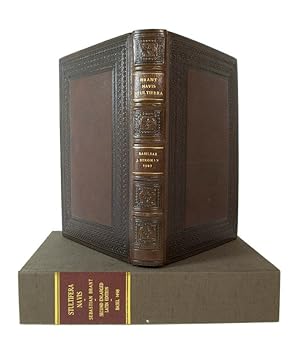
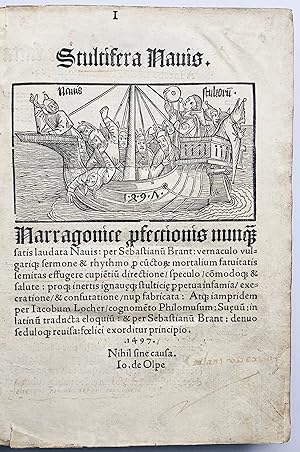
![Seller image for Alberti Dureri clarissimi pictoris et geometræ. De sym[m]etria partium in rectis formis hu[m]anorum corporum for sale by Librairie Le Feu Follet](https://pictures.abebooks.com/inventory/md/md30463716375.jpg)
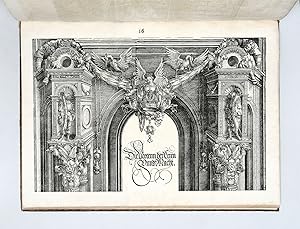

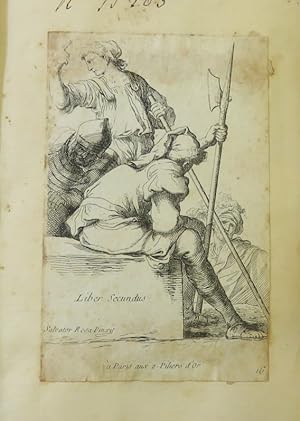

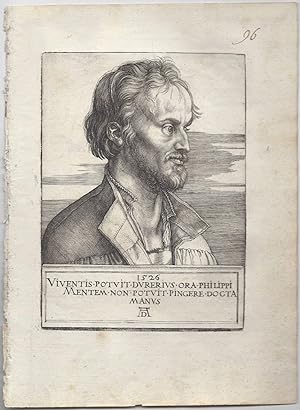
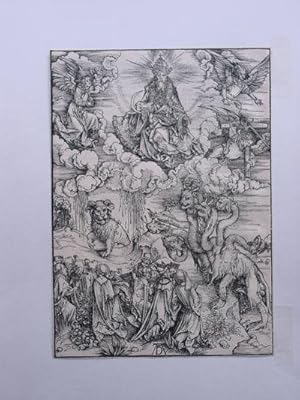
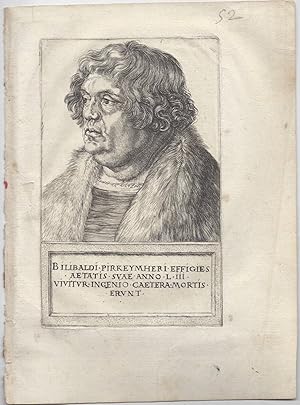
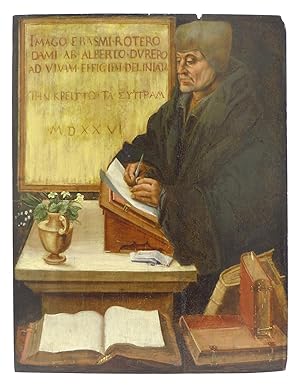
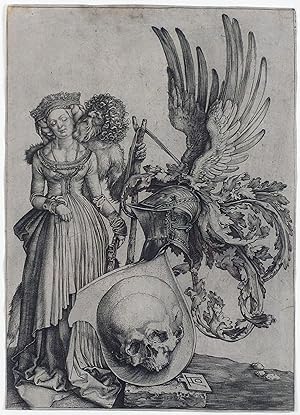
![Seller image for Opera Alberti Dureri. Das ist, Alle Bücher des weitberühmbten und künstreichen Mathematici und Mahlers [.], so viel deren von ihm selbst [.] kurtz vor und gleich nach seinem todt in Truck geben. Nemblich, vier von underweisung oder underrichtung der messung, mit dem Circkul und Richtscheit [.]. Jetzo [.] auß mangel der Exemplarien, mit sein selbst eigenen gemachten und geschnittenen zugehörigen Figuren, von newem auffgelegt und getruckt. 3 Teile in einem Band. for sale by Versandantiquariat Wolfgang Friebes](https://pictures.abebooks.com/inventory/md/md31137420615.jpg)
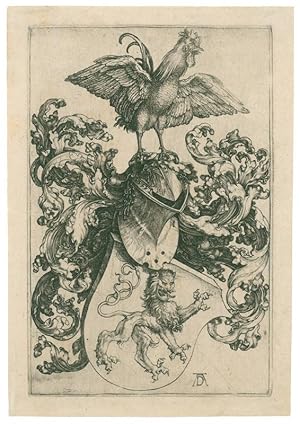
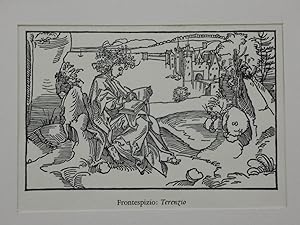
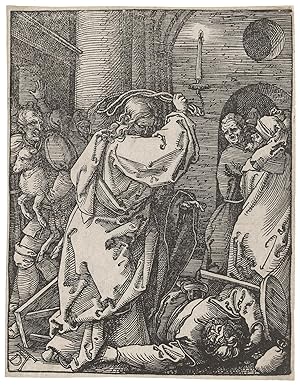
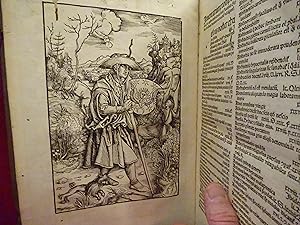

![Seller image for Finely executed carved ivory relief portrait of German humanist and public official Ulrich Varnbüler [1474-1545], based on a 1522 woodcut portrait by Albrecht Dürer. for sale by D & E LAKE LTD. (ABAC/ILAB)](https://pictures.abebooks.com/inventory/md/md31276111003.jpg)
![Seller image for Die Gefangennahme Christi. [1511]. [Original-Holzschnitt / original woodcut]. for sale by Antiquariat Lenzen](https://pictures.abebooks.com/inventory/md/md31503846575.jpg)
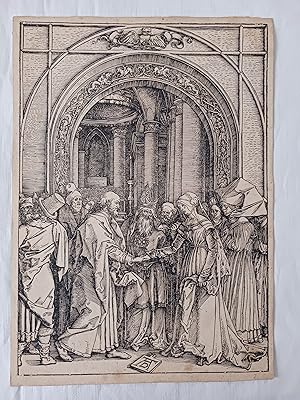
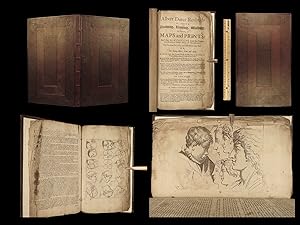
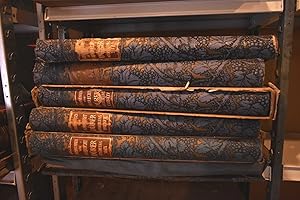
![Seller image for Opera Alberti Dureri. Das ist/ Alle Bücher des weitberühmbten und Künstreichen Mathematici [Mathematikers] und Mahlers [Malers] Albrechten Durers von Nürenberg/ so viel deren von ihm selbst im An. 1525 und 1528 kurtz vor und gleich nach seinem todt in Truck geben. [NUR Erster Teil:] Underweysung [Unterweisung] der messung/ mit dem zirckel unnd richtscheyt/ in Linien/ ebnen unnd gantzen corporen/ durch Albrecht Dürer zusamen getzogen. for sale by Antiquariat Hilbert Kadgien](https://pictures.abebooks.com/inventory/md/md31357525917.jpg)
![Seller image for [Apokalypse] Apocalipsis cu[m] figuris. for sale by Heinrich Heine Antiquariat oHG](https://pictures.abebooks.com/inventory/md/md31553076157.jpg)
